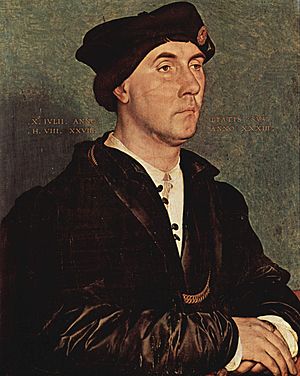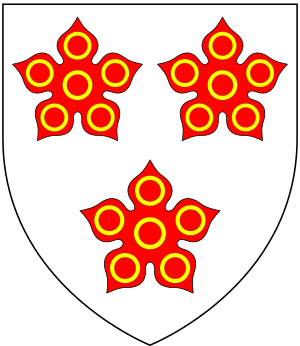Richard Southwell (courtier) facts for kids

Sir Richard Southwell (born around 1502 or 1503, died January 11, 1564) was an important English politician. He was a member of the Privy Council of England, which was a group of trusted advisors to the King or Queen of England.
Contents
Sir Richard Southwell's Early Life
Richard Southwell was born in Windham Manor in Norfolk, England. His father, Francis Southwell, worked for the government as an auditor, checking financial records. His mother was Dorothy Tendring. Richard was the oldest of four brothers.
When Richard was young, his father passed away in 1512, and Richard inherited his family's land and property. A couple of years later, he also inherited land from his uncle, Sir Robert Southwell. His uncle had managed properties that were taken over by King Henry VII of England.
In 1519, a man named Thomas Wyndham became responsible for Richard's care and education. Wyndham arranged for Richard to marry his stepdaughter, Thomasin Darcy. They had one daughter together. Later, Richard married Mary Darcy, who was the widow of Robert Leeche. They had another daughter.
Education and Early Career
In 1526, Richard Southwell began studying law at Lincoln's Inn in London. This was a place where future lawyers and government officials learned their trade.
He also became a tutor to Gregory Cromwell, who was the son of the very powerful government minister, Thomas Cromwell. Gregory lived with Southwell at Woodrising Manor in Norfolk, which Richard had inherited.
In 1531, Richard became a Justice of the Peace for Norfolk and Suffolk. This meant he was responsible for keeping law and order in those areas.
Sir Richard's Role in Government
From 1534 to 1535, Southwell served as the High Sheriff of Norfolk and Suffolk. This was another important local government role, overseeing legal matters and elections.
In 1536, a famous artist named Hans Holbein the Younger painted Richard Southwell's portrait. This shows how important he was at the time.
Richard was also involved in some major events during the reign of King Henry VIII. He was a witness in the trial of Sir Thomas More, a famous scholar and former Lord Chancellor.
In 1539, he was elected to the House of Commons of England, which is part of the English Parliament, representing Norfolk. He was also given the title of Knight Bachelor in 1540, which meant he was recognized for his service to the King.
Working for the King
After the King of Scotland, James V of Scotland, died, Southwell traveled to Edinburgh in January 1543. His job was to talk with Scottish leaders and help negotiate important agreements.
Richard Southwell played a role in the arrest of Henry Howard, Earl of Surrey. Surrey was accused of threatening the future of Prince Edward, the King's son. After Surrey's father, Thomas Howard, 3rd Duke of Norfolk, was also arrested, Southwell was one of three officials sent to take inventory of their belongings. He also helped carry out the wishes in the will of Henry VIII after the King died.
Service to Later Monarchs
Southwell was one of the people who signed a document called The Will of King Edward the Sixth, and His Devise for the Succession to the Crown. This document was about who would become the next ruler after King Edward VI.
On March 12, 1547, he was appointed to the Privy Council, the group of royal advisors. Although he was removed from the full council for a short time, he was reappointed by Mary I of England when she became Queen. Southwell was known for supporting the idea of marrying Elizabeth I of England to Edward Courtenay, the Earl of Devon.
He continued to be elected to represent Norfolk in Parliament several times, including in 1542, 1553, and twice in 1554. From 1554 to 1559, he held the position of Master of the Armouries, meaning he was in charge of the King's or Queen's weapons and armor.


